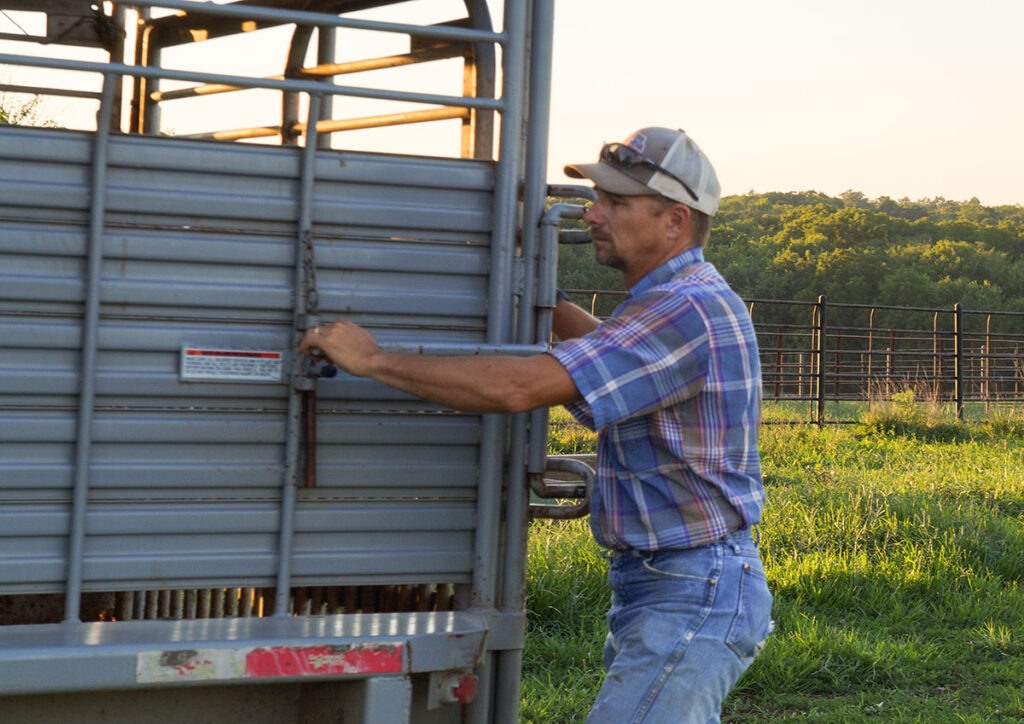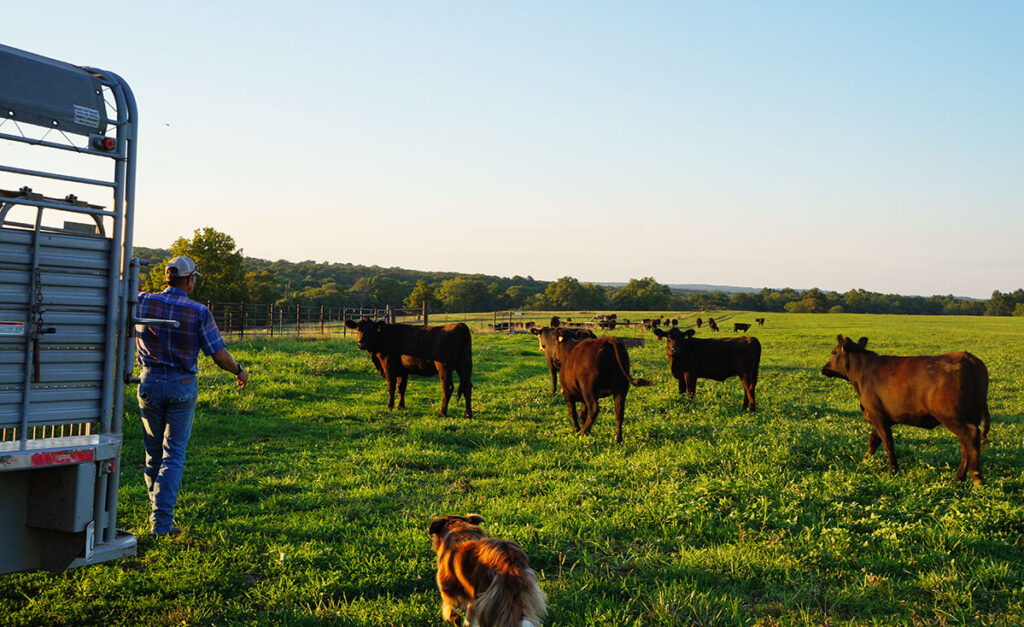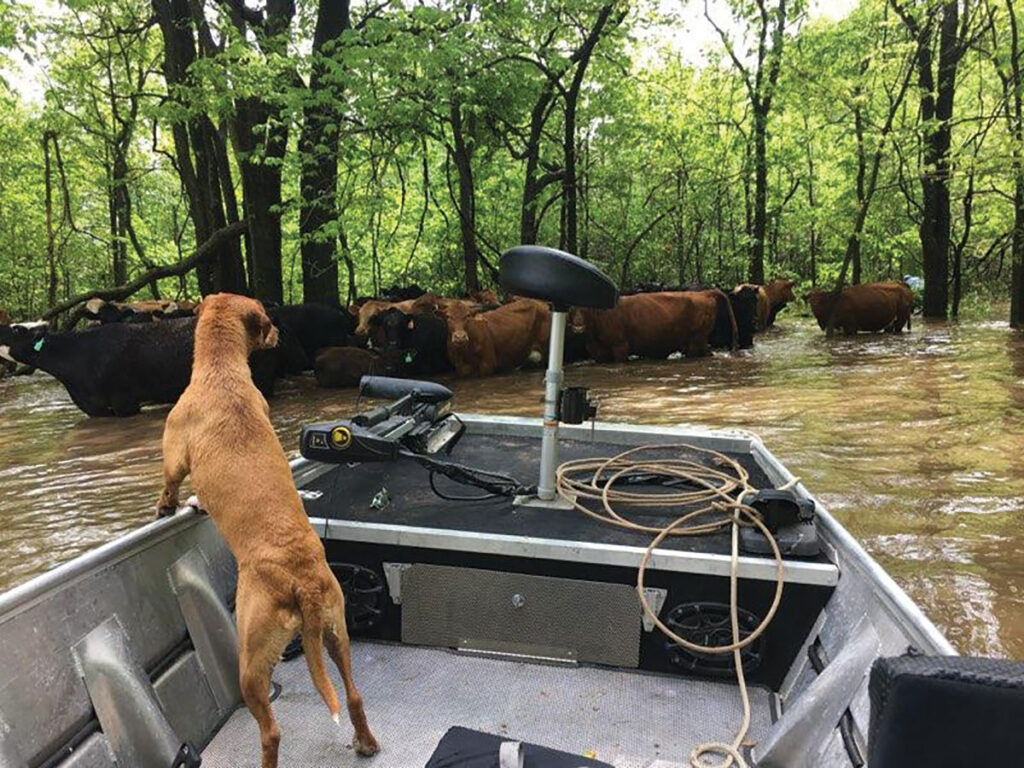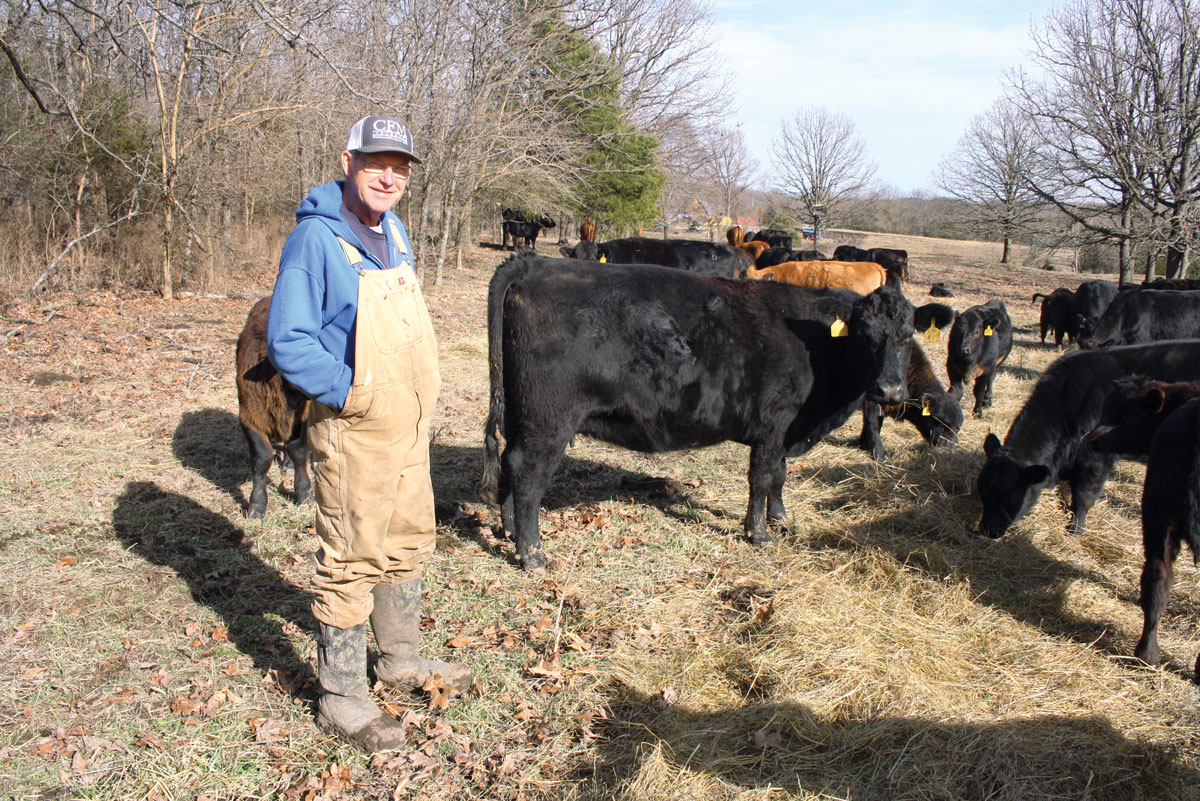
Chad Boyles’ herd began in 1983 with a bottle calf and a heifer
EL DORADO SPRINGS, MO. – Chad Boyles, along with his wife Trish, live on land that has been in Chad’s family for nearly 75 years.
Chad runs a cow/calf operation in Cedar County near El Dorado Springs, Mo. J.D. and Bonnie Rains, Chad’s grandparents, purchased the initial 290 acres in 1948 and added another 150 acres later.
“I always knew this is what I wanted to do,” Chad said about raising cattle.
As a boy, Chad regularly helped his grandparents on the farm. He knew the college route was not for him, so he worked out a deal with them and, at age 19, began leasing the 440 acres with the intent to purchase. More recently, Chad expanded and began leasing an additional 240 acres of pasture.
Chad’s herd started in 1983 with a bottle calf and a heifer, which grew into 125 Angus-based cows. Each year, two sets of calves go to market: Chad runs 90 spring-calving and 35 fall-calving cows. Unlike his predecessors, Chad has chosen to raise primarily Angus cattle.
“They are typically the top selling feeder calves at market; the cows are of moderate size and easy to handle,” Chad claimed.
Five bulls are used for breeding, and his calves typically weigh 600 to 700 pounds when they go to market in January and August. As with most operations, the goal is to be as profitable as possible. Throughout his 20 years of working at the Stockton Animal Clinic, Chad was exposed to different operating styles and learned a lot about what did and what didn’t work when it came to managing a cow/calf operation. Chad also credited Dr. Gary Whitesell for imparting a wealth of knowledge that has allowed him the ability to recognize and treat a variety of illnesses and conditions presented when maintaining herd health.
Harsh weather conditions can be exhausting and stressful.

“I like the challenge of trying to beat Mother Nature,” Chad said. Spring calving begins annually on Feb. 1, and the last couple of winters have been exceptionally tough. Extremely cold temperatures combined with snow that lasted several days meant checking cows around the clock, sometimes as frequently as every two hours. Although he has not always won, he has kept his yearly death loss below 5 percent.
Spring can also mean rain, and, occasionally, more than Cedar Creek can keep in its banks. The spring of 2019 is one Chad will never forget.
“That was the year of the water rodeo,” Chad recalled with a laugh. He had moved cattle to safe ground, but about 50 cows and calves ended up trapped across the creek in flood and back waters. Six of his friends showed up the next day with jet boats.

“They launched in backwater that was pasture the day before,” Chad reminisced. They roped and tied the calves, put them in the boats, and took them across the flooded corn field to dry land. When the cows heard their calves bawling, they swam to them. Everyone made it out safely that day.
“It might have been a lot more fun if it had been somebody else’s cows,” Chad said.
Unlike that spring, this summer has been extremely dry. Fortunately, Chad managed to get his hay baled in early June. Around 450 round bales are needed each year to get through the winter season comfortably.
“Mixed-grass hay interseeded with legumes regularly improve the quality of the hay and pasture and dilute the fescue toxicity,” Chad remarked. Clover and crabgrass are also baled and used for feeding. Lesser quality hay gets used for bedding during spring calving season.
During the winter, cattle are supplemented with protein, depending on the quality of the hay and condition of the cows. Even when there is a surplus of hay, Chad rarely sells it.
“My grandpa always told me ‘when you have a lot of hay, you may need a lot of hay,’” Chad said. Along with not being overstocked, he has been fortunate to have enough pasture and to have been under a couple of timely rain showers.
In addition to his cow/calf operation, Chad works as a field rep for Mo-Kan Livestock and regularly helps his mother, Jackie Boyles, and neighbors with their cattle operations. Like most producers, Chad does not have a lot of free time, but tries to make time for hunting and fishing when he can.
Chad is not sure he will ever fully retire, but he does hope his sons, Hunter (20) and Tanner (18), will return to the ranch to continue building the family’s legacy.







